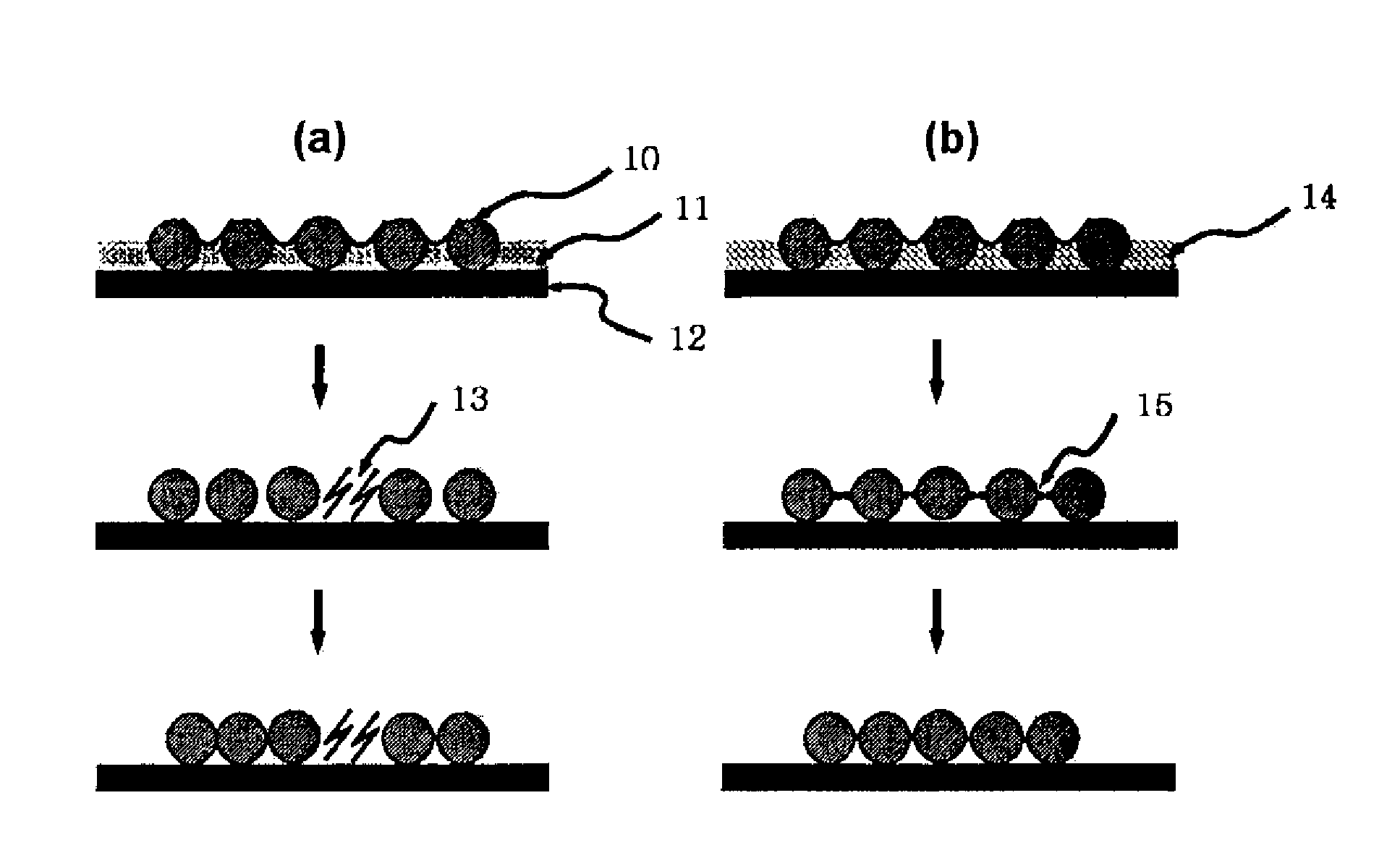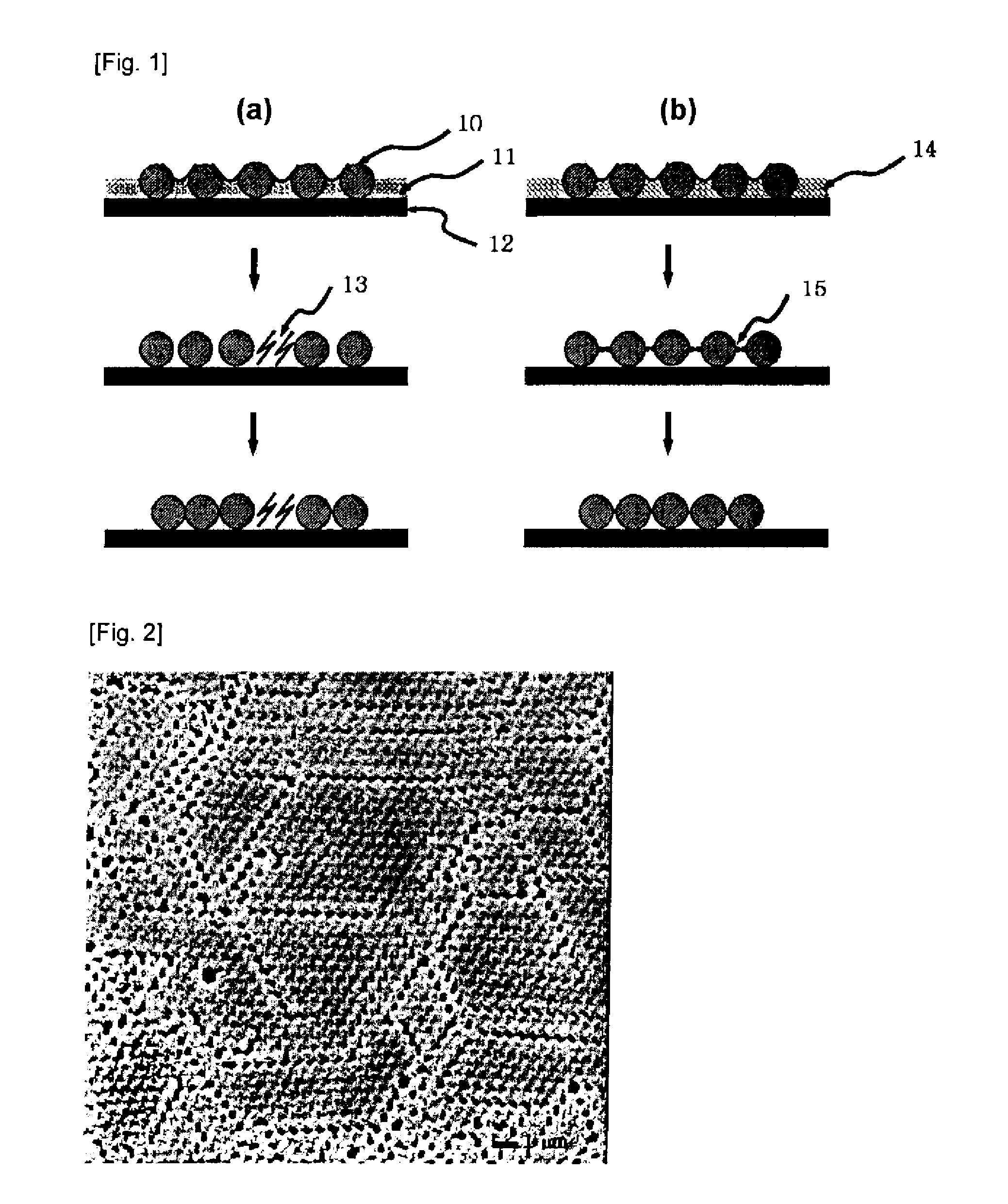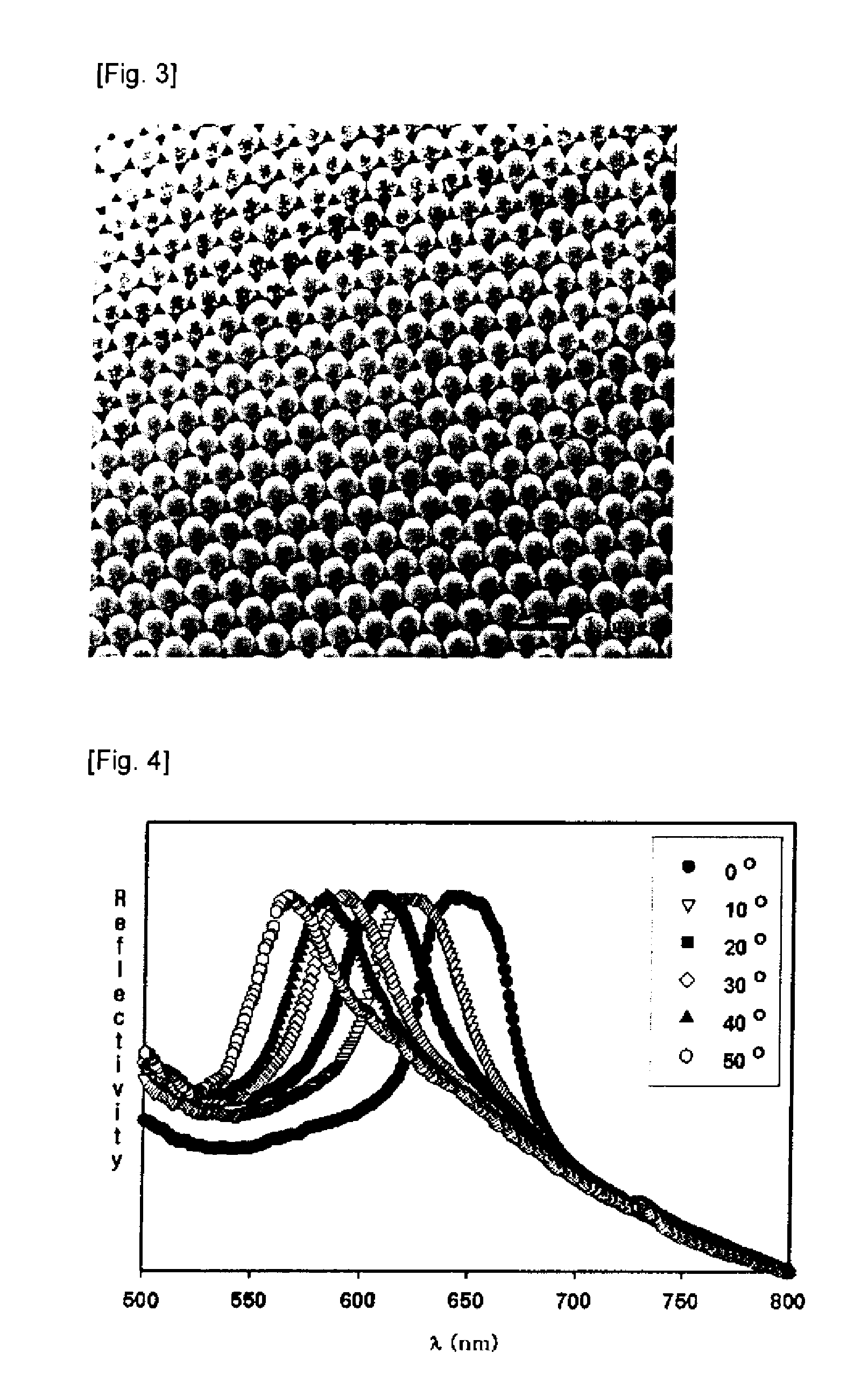Colloidal photonic crystals using colloidal nanoparticles and method for preparation thereof
a colloidal nanoparticle and photonic crystal technology, applied in the field of colloidal nanoparticle colloidal photonic crystals, can solve the problems of high incidental expenses, long processing time, and difficulty in preparing large-scale photonic crystals without defects, and achieve the effect of less time and no surface defects
- Summary
- Abstract
- Description
- Claims
- Application Information
AI Technical Summary
Benefits of technology
Problems solved by technology
Method used
Image
Examples
example
Example 1
[0054]In a colloidal nanoparticle solution, water was used as a dispersion medium and 460 nm diameter polystyrene spherical particles were used as nanoparticles.
[0055]The 460 nm diameter polystyrene particles were dispersed in the water at 0.5 weight percent, and then 0.21 weight percent of polyvinyl pyrrolidone, as a viscoelastic material, was dissolved in the colloidal nanoparticle solution. After a substrate was deposited in the solution, the dispersion medium was vaporized in an oven at 60° C., whereby colloidal photonic crystals were prepared.
[0056]This was confirmed through observation with a scanning electron microscope as shown in FIG. 2.
example 2
[0057]Photonic crystals were obtained by the same method as example 1 with the exception that 0.63 weight percent of polyvinyl pyrrolidone was used as the viscoelastic material. This was confirmed through observation with a scanning electron microscope as shown in FIG. 3.
example 3
[0058]Photonic crystals were obtained by the same method as example 1 with the exception that 0.63 weight percent of polyacrylic acid was used as the viscoelastic material.
PUM
| Property | Measurement | Unit |
|---|---|---|
| volume ratio | aaaaa | aaaaa |
| volume ratio | aaaaa | aaaaa |
| diameter | aaaaa | aaaaa |
Abstract
Description
Claims
Application Information
 Login to View More
Login to View More - R&D
- Intellectual Property
- Life Sciences
- Materials
- Tech Scout
- Unparalleled Data Quality
- Higher Quality Content
- 60% Fewer Hallucinations
Browse by: Latest US Patents, China's latest patents, Technical Efficacy Thesaurus, Application Domain, Technology Topic, Popular Technical Reports.
© 2025 PatSnap. All rights reserved.Legal|Privacy policy|Modern Slavery Act Transparency Statement|Sitemap|About US| Contact US: help@patsnap.com



